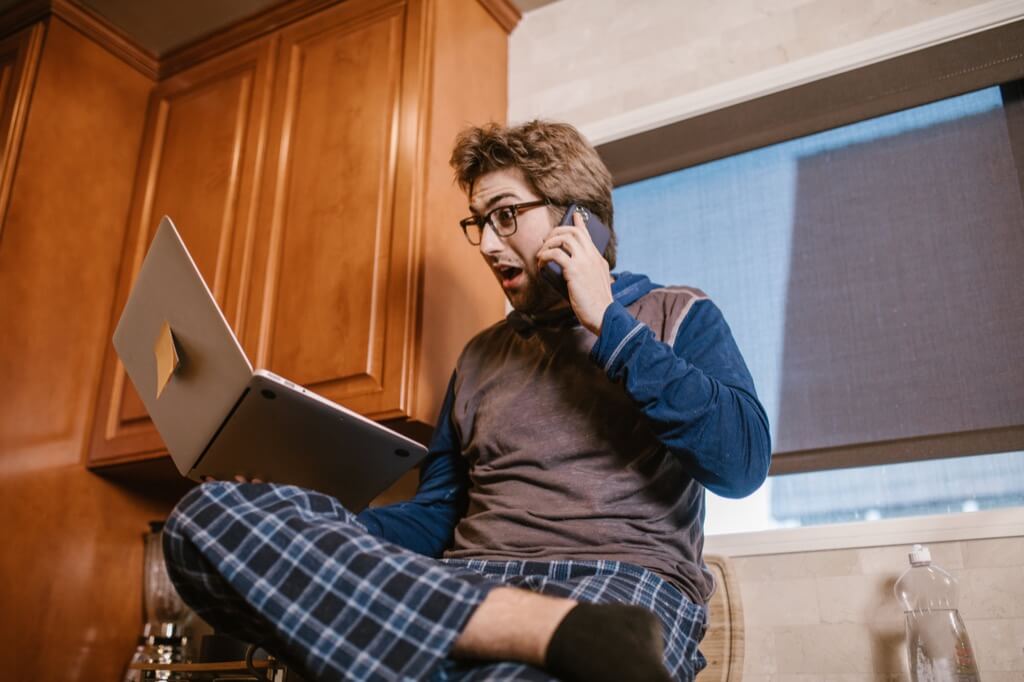Before the 1960s, America lacked a unified emergency contact system. Instead, each locality had its system, often leading to confusion and delay. Large cities like Los Angeles had multiple departments with different numbers, complicating matters further. Telephone operators often became the default emergency dispatchers, directing calls to the appropriate services. This disjointed system proved inefficient, particularly in urgent situations where every second counted.
The need for a streamlined approach became evident, prompting the National Fire Chief’s Association to propose a national emergency number in 1957. However, it wasn’t until a decade later, under President Lyndon B. Johnson’s administration, that the idea gained significant momentum. A 1967 report to the President’s Commission on Law Enforcement and Administration of Justice recommended a singular number for emergencies, advocating separate lines for emergency and non-emergency calls at police stations.
To implement this concept, the Federal Communications Commission (FCC) collaborated with the American Telephone and Telegraph Company (AT&T) in 1967. AT&T proposed the number 911, chosen for its brevity, ease of recall, and quick dialing on rotary phones, which were prevalent at the time. This choice also aligned well with AT&T’s existing 611 and 411 services, facilitating a smoother transition.
Congress swiftly backed AT&T’s recommendation, enacting legislation to establish 911 as the national emergency number. To ensure a fair transition for telephone companies needing to upgrade their systems, the Bell System policy integrated these costs into basic customer rates.
The adoption of 911 was gradual. A decade after its establishment, only 26% of U.S. citizens could access the service. By 1989, this number had risen to 50%, and a decade later, it reached 93%. Today, around 99% of the U.S. population has access to 911, making it a critical backbone of the country’s emergency response system.
Britain’s Trailblazing 999 Service
Did you know that Great Britain was the pioneer in establishing a universal emergency number? Back in 1937, they introduced 999 following a tragic fire that claimed five lives. This initiative set a global precedent, showing you the power of effective emergency response systems in saving lives.
Haleyville’s Historic 911 Call
Your country’s journey with 911 began in Haleyville, Alabama. The first-ever 911 call in America was made by Senator Rankin Fite on February 16, 1968, and answered by U.S. Representative Tom Beville at the local police station. Just weeks later, Nome, Alaska, followed suit, marking the rapid adoption of this life-saving system.
911 Goes Global
It’s fascinating to see how 911 transcended national boundaries to become an international standard. Canada adopted it as their emergency number, demonstrating the universal appeal and effectiveness of the system.
Originally, 911 calls were routed based on phone numbers, which often led to inaccuracies due to boundary mismatches. The introduction of Enhanced 911, using addresses for routing, significantly improved the system’s efficiency. This means if you call 911 today, your call will be more accurately directed, ensuring quicker response times.
Navigating 911 Calls from Mobile Devices
With the advent of cell and VoIP phones, determining a caller’s location became trickier. But don’t worry, the FCC’s stringent location requirements for cell phones ensure that your emergency call is pinpointed with high accuracy, whether it’s through GPS tracking or cell network location. This evolution in technology ensures that help is just a call away, no matter where you are.
The Future of Emergency Communication
Imagine being in a situation where making a call isn’t possible. Thankfully, the option to text 911 is rolling out, with major carriers already on board. If you ever need to use this service and it’s not available in your area, you’ll receive an automatic text response informing you. This adds an extra layer of safety, ensuring you can reach out for help even in the most challenging situations.
N-1-1 Numbers
Your phone is a gateway to various community services beyond emergencies. From 2-1-1 for community services information to 7-1-1 for Telecommunications Device for the Deaf (TDD) relay, these N-1-1 numbers connect you to a range of services, ensuring that assistance is just a few digits away. This diversity in services demonstrates how our communication systems are evolving to meet your diverse needs.
The Digital Future of Emergency Services
The future of 911 promises to be more integrated with the technology you use every day. Expect advancements in emergency services that seamlessly connect with your smart devices, wearables, and even home automation systems. This means that in times of crisis, the technology around you could automatically alert emergency services, providing them with crucial information like your location and the nature of the emergency, ensuring faster and more efficient help.
The accuracy of geolocation services is continually improving. Shortly, if you find yourself in an emergency, advanced geolocation technologies will enable responders to pinpoint your exact location with even greater precision. This is particularly crucial in densely populated urban areas or remote locations where identifying an exact position can be challenging. Such advancements will drastically reduce response times and could be life-saving in critical situations.
AI and Machine Learning in Emergency Dispatch
Artificial intelligence (AI) and machine learning are set to revolutionize how emergency calls are handled. In the future, AI could assist in quickly analyzing your emergency, prioritizing calls based on urgency, and even providing immediate guidance or instructions while you wait for responders. This means that during your most critical moments, you’ll have an intelligent system working alongside human operators to offer you the best possible assistance.

Telemedicine is a burgeoning field that is likely to intersect with emergency services. In situations where immediate physical medical intervention is not necessary, you might receive preliminary medical consultations directly over the phone. This integration can be particularly helpful in managing healthcare resources and ensuring that emergency services are utilized efficiently.
An important aspect of the future of 911 is your awareness and preparedness. Community education programs will likely focus more on teaching you when and how to effectively use emergency services. Understanding the nuances of the evolving 911 system will empower you to act more confidently and appropriately during emergencies, ensuring that the system works effectively for everyone.
10 Disturbing Facts About 911 Calls
- Many 911 operators receive calls where the caller is unable to speak, often indicating a severe emergency or a situation where the caller is hiding.
- Despite the seriousness of the service, 911 dispatchers regularly deal with prank calls, which not only waste resources but also potentially delay response to real emergencies.
- During major disasters, 911 systems can become overwhelmed, leading to busy signals and delayed responses, which can be distressing for people desperately needing help.
- A significant percentage of 911 calls are accidental, often made by children playing with phones or ‘pocket dials’, which can obscure real emergencies in the call log.
- Callers who don’t speak English or have heavy accents sometimes face challenges in communicating their emergencies, potentially delaying response times.
- A substantial number of 911 calls involve mental health crises, where callers are experiencing severe psychological distress, posing challenges for operators not trained as mental health professionals.
- Especially in the early days of cell phones, locating a caller in distress was sometimes difficult, leading to tragic outcomes when precise locations couldn’t be determined quickly.
- The job of a 911 dispatcher is incredibly stressful, often leading to burnout, mental health issues, and high turnover rates among these critical first responders.
- Some individuals frequently call 911 for non-emergencies, either due to loneliness or as a cry for help, which can strain the system and complicate responses for genuine emergencies.
- Dispatchers often receive deeply disturbing calls, including those from victims during crimes or witnesses to severe accidents, which can have lasting psychological impacts on the operators.
Shocking Statistics
- An astonishing 240 million calls are made to 911 in the U.S. each year, reflecting the critical role this service plays in public safety. A significant portion of these calls, 80% or more in many areas, come from wireless devices, demonstrating the shift in communication trends over the years.
- In Alberta, Canada, a remarkable 94.3% of 911 calls were answered within just 10 seconds in 2019. This statistic underscores the efficiency and readiness of emergency dispatch systems in handling urgent calls.
- In 2019, states and territories reported over 211.2 million 911 calls, out of which nearly 152 million were made from wireless devices. This trend highlights the increasing reliance on mobile communication in emergencies.
- On an average day, U.S. 911 dispatch centers handle around 650,000 calls. This number varies by city, with the Seattle Police Department responding to 82,865 Priority 1 emergency calls in 2020, the Minneapolis 911 center receiving over 400,000 calls, and the Toronto Police Service handling approximately 1.9 million calls in 2019.
- In 2020, about 49.1% of 911 calls required the dispatch of emergency services. Interestingly, 40.5% of the calls were classified as false, abandoned, or accidental, highlighting the challenges dispatchers face in differentiating between real and non-emergency situations.
The establishment of 911 as the go-to emergency contact has been a monumental step in ensuring public safety across North America. This system, evolving from its humble beginnings in Haleyville, Alabama, to a sophisticated network handling millions of calls yearly, stands as a testament to technological and social progress.


